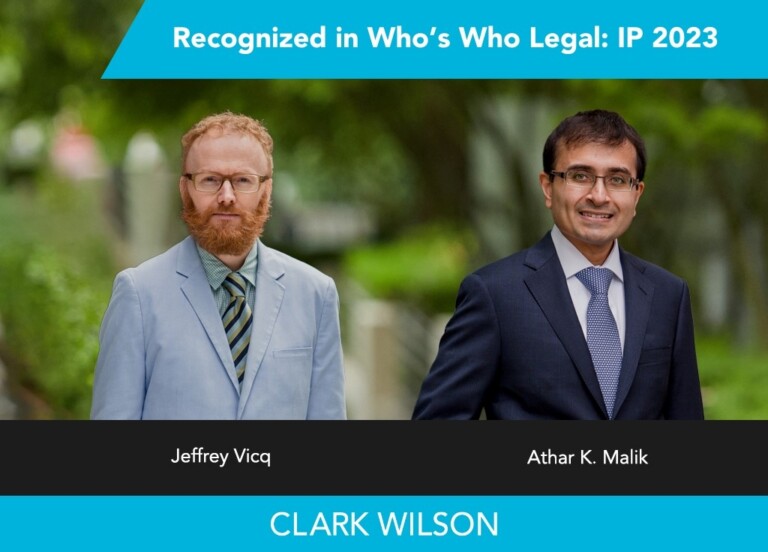
In July 2020 (when little else was going on…), my colleague, David Bowden, and I wrote a couple of pieces about the Federal Court of Appeal’s decision in Entertainment Software Assoc. v. Society Composers 2020 FCA 100.
David’s article discussed the result, which was that the Copyright Board’s approval of a proposed SOCAN tariff that created two royalties for making a work available online for streaming or downloading, was ruled to be unreasonable.
My article addressed a particular aspect of the Court’s reasoning: how to interpret the Copyright Act in the context of the Canada’s implementation of the WIPO Copyright Treaty. The Court made a strong point—while interpreting a Canadian statute, you must determine the statute’s “authentic meaning”. Arriving at that “authentic meaning” often does involve referring to a relevant treaty, but one cannot leap to the conclusion that the domestic law aligns with the treaty, and, more to the point in this case, one cannot “twist or amend the authentic meaning of domestic law to make it accord with international law.” (para 91)
SOCAN and Music Canada appealed to the Supreme Court of Canada. The result was: all 9 judges of the Supreme Court of Canada affirmed the Federal Court of Appeal’s decision, though differed on an issue that only litigation counsel can love: the standard of review. In short, seven judges found the Copyright Board’s decision to certify the proposed SOCAN tariff was incorrect, and two judges applied a different analytical framework and found that the Copyright Board’s decision was unreasonable.
The WIPO Copyright Treaty, the “making available right” and some awkward timing
As background, the decision is focused on three of the fundamental rights of copyright holders, which are described in section 3(1) of the Copyright Act. The relevant provisions are:
3 (1) For the purposes of this Act, copyright, in relation to a work, means the sole right to [A] produce or reproduce the work or any substantial part thereof in any material form whatever, [B] to perform the work or any substantial part thereof in public or, if the work is unpublished, to publish the work or any substantial part thereof, and includes the sole right:
…
(f) in the case of any literary, dramatic, musical or artistic work, to communicate the work to the public by telecommunication,
and [C] to authorize any such acts.
Recall that two of the cases in the 2012 SCC Pentalogy (ESA and Rogers) clarified that the act of making a work available online for streaming (whereby, in the end, the user does not retain a copy of the work) is a communication of the work to the public, as described in section 3.1(f), and that is a performance of a work. Also, making a work available for downloading (whereby, in the end, the user does retain a copy of the work) is not a performance of a work.
However, in an odd bit of timing, ESA and Rogers were released after Parliament amended the Copyright Act, but before the amendments came into force. The amendments (contained in the Copyright Modernization Act) introduced (amongst a great many other things) section 2.4(1.1) of the Copyright Act, which is commonly referred to as the “making available right”. Here it is (in full):
For the purposes of this Act, communication of a work or other subject-matter to the public by telecommunication includes making it available to the public by telecommunication in a way that allows a member of the public to have access to it from a place and at a time individually chosen by that member of the public.
The “making available right” was introduced into law by Parliament to give effect to Article 8 of the WIPO Copyright Treaty, which says (in part):
…authors of literary and artistic works shall enjoy the exclusive right of authorizing any communication to the public of their works, by wire or wireless means, including the making available to the public of their works in such a way that members of the public may access these works from a place and at a time individually chosen by them.
Because ESA and Rogers considered the provisions of the Copyright Act before the adoption of section 2.4(1.1), SOCAN applied to certify a performance rights tariff based on the argument that Parliament intended materially change the law upon which the ESA and Rogers decisions were based. Their argument, which the Copyright Board agreed with, was that the law was now that the act of putting something available online for streaming or downloading is actually two acts: first, the act of making the work available (regardless of whether someone streams or downloads it), and the second act happens when the work is actually streamed or downloaded. On this interpretation, SOCAN can charge two royalties, one royalty for each act.
The Federal Court of Appeal, and now the Supreme Court of Canada, disagreed. They concluded that SOCAN and the Copyright Board may have correctly interpreted Article 8 of the WIPO Copyright Treaty, but they did not property interpret how Parliament chose to implement it in Canada.
The Supreme Court’s Ruling on Interpreting Treaties
First, it is important to note the majority’s statements on how to properly interpret international treaties:
“A treaty should be considered when interpreting statutes that purport to implement the treaty, in whole or in part. The treaty is relevant at the context stage of the statutory interpretation exercise.” (Para 44, citations omitted)
“The court’s task is to interpret what the legislature (federally and provincially) has enacted and not subordinate this to what the federal executive has agreed to internationally. It is always the domestic statute that governs because “[i]nternational law cannot be used to support an interpretation that is not permitted by the words of the statute”. ” (Para 48, citations omitted)
The majority’s ruling on the making available right
The majority of the Court found that Parliament did intend to implement the making available right set out in the WIPO Copyright Treaty. It did so two ways: first, with respect to making works available for streaming, by introducing section 2.4(1.1), which confirmed that the existing performance rights of copyright owners include the right to make works available online (regardless of whether they are actually streamed).
Second, with respect to making works available online for downloading, making no changes, because no changes were necessary: the existing rights to authorize others to reproduce works offer sufficient protection.
Streaming
In particular, the Court found that section 2.4(1.1) clarifies that the exclusive right to control the performance of one’s work includes the right to make a work available for streaming online.
Therefore, someone who puts an unauthorized copy of work online for streaming, has infringed copyright even if no one actually streams the work. Drawing an analogy to broadcasting, which involves sending out signals containing music or audio-visual programming that may (or may not) be received by users, the key act is the broadcasting of the signal, not whether some actually tunes in. Similarly, if someone does start streaming, that is merely the continuation of the same act, not a new act (i.e. it’s not a new broadcast, or a new online posting).
Downloading
The other context is when a person makes a work available online to be downloaded. This is different from streaming because it ultimately results in the user obtaining a lasting copy of the work. Therefore, making a work available for download engages the right to control who reproduces (i.e. copies) a work. Section 2.4(1.1) does not deal with reproduction, because it concerns “communication of a work” which, as the SCC previously determined, only concerns performance rights.
The Court concluded that the existing provisions of the Copyright Act regarding the right to (a) control the reproduction of works, and (b) control who authorizes others to copy works, in effect, combine to create a similar “making available right” for downloading activities. So, if I make an unauthorized copy of a song recording, I’ve infringed the copyright owner’s exclusive right to control who makes copies of their recordings. If I then post the recording online for others to download, I’ve also infringed the copyright owner’s exclusive right to authorize the copying of my work by others.
Connecting the dots
Since SOCAN’s proposed tariff was for performance rights, the Court ultimately concluded that it cannot apply to downloads (which engage reproduction rights). As a result, the Copyright Board was incorrect (and unreasonable) for approving the a performance tariff for downloads.
With respect to streaming, section 2.4(1.1), read in its proper context (including in light of the WIPO Copyright Treaty), confirms the scope of the performance right: the performance right includes the act of making something available for streaming. This is important as it confirms that, to prove infringement, the copyright holder does not need to prove that the work was ever actually streamed.
Moreover, a technologically neutral interpretation of the performance right confirms that streaming a work online is a single action: making the work available for a member of the public to stream is analogous to broadcasting it on the radio or on a TV channel… the fact that a person starts streaming the video (like tuning into the radio or TV) does not make the stream a separate performance.
And so, the Copyright Board’s decision to approve a tariff that contained two royalties for the single act of making a work available online for streaming was incorrect (and unreasonable).
The majority of the SCC also noted that this interpretation of 2.4(1.1) does not mean that making content available for downloading is not protected. Rather, the majority noted that the WIPO Copyright Treaty acknowledged that each contracting party (i.e. each Country that signs and implements the treaty) can decide how to adapt its own laws to implement the treaty – that may involve drafting new provisions, or leaving well enough alone if the existing law already provides the protection. Here, as noted above, the existing reproduction and authorization rights set out in the Copyright Act were sufficient.
We made it…
If you’ve made it this far, you may feel like you’ve actually done the twist!
In the end, Parliament implemented the WIPO Copyright Treaty, maybe not in the exact way contemplated by some, but there’s domestic sovereignty for ya. The case is a great reminder that, for all the hubbub around signing treaties, the provisions of relatively hubbub-free domestic law govern.
With this decision on the books, we may see interested parties, including the copyright collective community, add this to their list of issues with the Copyright Act, and advocate for amendments that bring the Canadian Copyright Act closer to what they feel is the true intent of the WIPO Copyright Treaty —so…stay tuned?
Michal is grateful for the able assistance of Hannah Stanley, Summer Articled Student in preparing this article.



